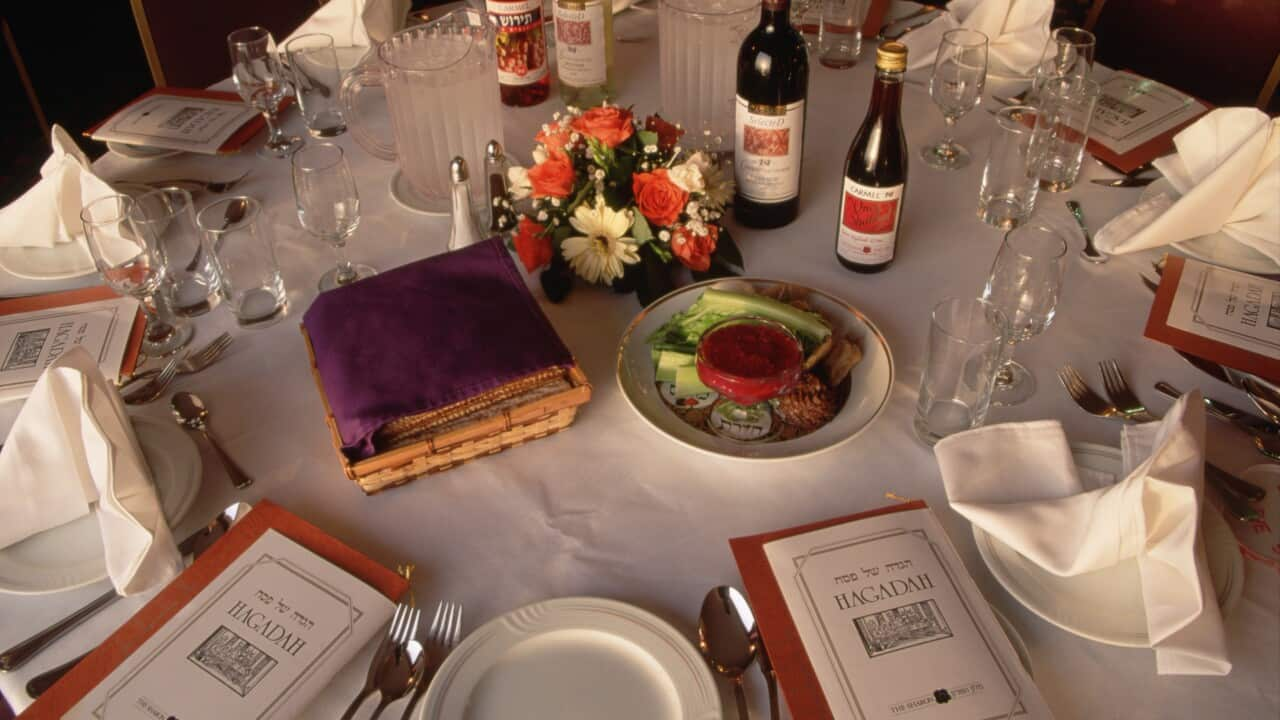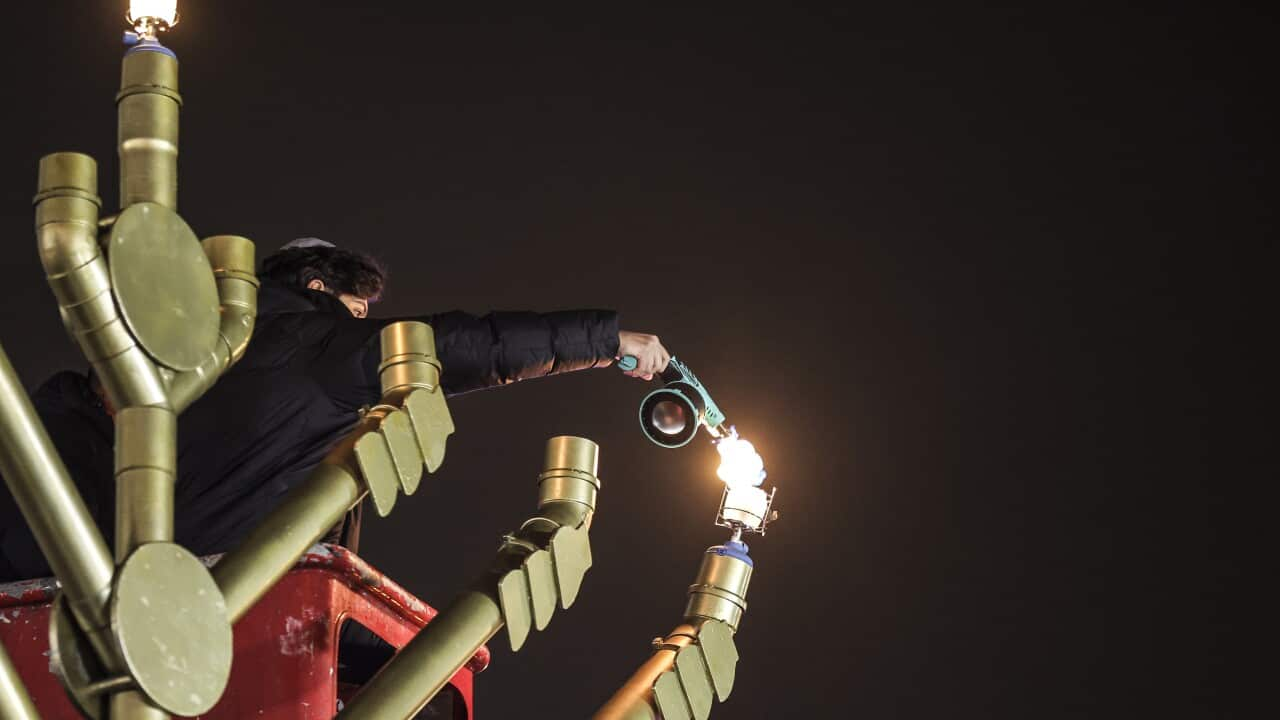Each year, Jewish families around the world gather to mark Passover — an eight-day festival that commemorates the liberation of the Jewish people from slavery in ancient Egypt.
But while the themes of Pesach (the Hebrew word for Passover) are shared, the way the festival is celebrated can vary widely, depending on where a Jewish family comes from.
Elana Benjamin is a Jewish Australian writer of Indian-Iraqi heritage. She's also a co-founder of Sephardi Mizrahi Voices Australia, an organisation seeking to raise awareness of the traditions, culture and history of Jews from Southeast Asia, the Middle East, North Africa and Iran.
She says that growing up, she rarely saw her Sephardi Mizrahi Jewish culture reflected back at her — but Passover gives her an opportunity to reconnect with her identity and family.
What is Passover?
Passover is a major Jewish holiday that celebrates the biblical story of the Israelites' escape from slavery in Egypt.
This year, it starts on the evening of Saturday 12 April and ends on Sunday 20 April.
The festival commemorates the birth of the Jewish nation.
The holiday involves a series of rituals, with each one representing a different part of the exodus story.
What is the Seder?
Central to Passover is the Seder, a ceremonial meal held on the first night (or the first two nights in the diaspora), where families gather to retell the exodus story through symbolic food, prayers and songs.
Although the composition of the meal varies in each region, the Seder is comprised of three core elements: unleavened bread, bitter herbs like horseradish, celery, and cos lettuce, and a bone.

The Seder plate is steep in symbolic foods representing the story of Jewish exodus from Egypt. Source: Getty / Portland Press Herald
A hard-boiled egg tends to feature, representing sacrifice and embodying hope and consolation.
Salty water pays homage to the slaves' tears, and a fruit paste symbolises the mortar with which the Jewish people made bricks.
What else happens during Passover?
For the duration of Passover, some Jewish people avoid eating or owning chametz — any food made from fermented grains like wheat, barley, rye, oats or spelt. This includes everyday staples such as bread, pasta, beer and most cakes.
In preparation, these households undergo intensive cleaning to remove any trace of chametz, a tradition rooted in the biblical story where the Israelites left Egypt in such haste they didn’t have time to let their bread rise.
To keep kosher for Passover, some families use a separate set of kitchen utensils, or they may kasher their regular ones using boiling water or fire to make them suitable for the holiday.
Kosher describes any food that adheres to a strict set of dietary rules in Judaism, while kasher means to make something kosher for use.
Many people attend synagogue services throughout the week, and families often take the opportunity to spend time together, sharing meals or taking children on outings. Community organisations also step in, distributing food packages to support those in need.

Elana Benjamin is a Jewish-Australian writer of Indian-Iraqi heritage. Passover gives her the opportunity to celebrate her Sepahrdi-Mizrahi Jewish identity. Source: Supplied
'Not one way to be Jewish'
Benjamin grew up in an Australia, where Jewish identity was often "Ashkenormative".
"Back then, diversity wasn’t a word that was used," she says. "The whole community was very focused on the Ashkenazi story."
Ashkenazi Jews are those with roots in Central and Eastern Europe, with many being the descendants of Holocaust survivors. The Jewish community in Australia is mostly comprised of Ashkenazi Jews.
But Benjamin's Indian and Iraqi background means that she is part of two distinct Jewish diasporas — Sephardi (with roots in Spain and Portugal) and Mizrahi (with roots in the Middle East and North Africa) — and her Seder table reflects that.
"For so many years, I didn’t see the Sephardi Mizrahi foods of my community reflected back to me," she explained.
There are so many different ways to be Jewish and there's so much beauty in the different traditions.Elana Benjamin
While Ashkenazi Jews make the sweet side dish charoset from grated apple, nuts and wine, Benjamin's family uses halek, a thick syrup made of dates.
"My dad used to soak the dates, squeeze them through muslin cloth, then boil it up so it would thicken. It was really labour intensive," she says.
Some of her recipes blend Indian and Jewish influences, like a Passover bread pudding made of matzo meal, a substitute for flour or breadcrumbs made with unleavened bread.
While Ashkenazi Jews might use horseradish on the Seder plate, Benjamin’s family uses cos lettuce, like many Iraqi Jews. Instead of dipping parsley into salt water, they dip celery leaves into lemon juice.
And unlike Ashkenazi Jews, Sephardi Jews can eat rice during Passover.
"Every Jewish person I have ever met is like, 'Oh, you’re Sephardi? You can eat rice on Pesach? You’re so lucky!'," she said.
Benjamin says food is just one part of the rich cultural variation that exists within global Jewish communities. "There’s not one way to be Jewish," she said.
"There are so many different ways to be Jewish and there's so much beauty in the different traditions."
She also encourages people to adopt different Jewish traditions.
"Persian Jews, for example, during Deyenu [a traditional song sung during Passover], they hit each other with shallots or leeks to replicate the whipping of the Jews of the slaves by the Egyptians."
"There's no reason that if you're not a Persian Jew that you couldn't do that in your Seder. They're really fun, beautiful traditions."
Not just tradition
While Passover holds deep religious meaning, for Benjamin, it’s the sense of family and continuity that keeps her coming back to the table.
"It’s probably my least favourite of the chagim [holiday]," she admits. "I loved it as a child, but as an adult, it is just so much work — so much cleaning and cooking."
But the joy of gathering with family and honouring the past outweighs the stress.
"But at the same time, I think it's important to keep that alive and to feel that sense of connection to Jewish history and tradition and past generations — that's why I do it," she said.
"I think that sense of connection and belonging and family is really what I love about it, rather than the technical religious aspects of it.
"There's something really special about coming together with family and telling the story and signing the Iraqi tunes."



